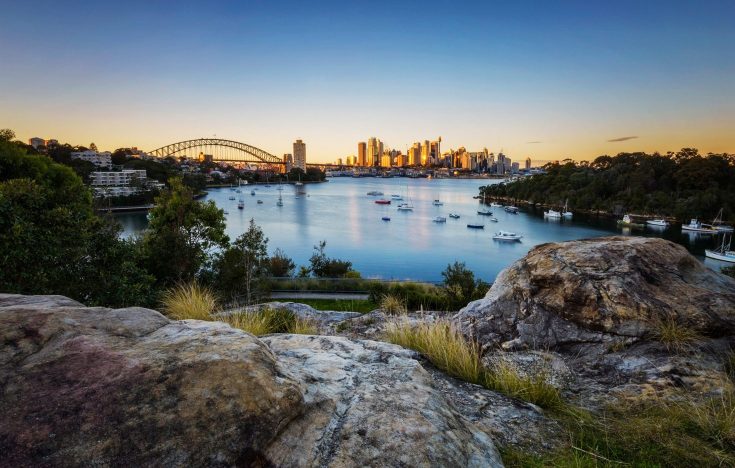Australia has the potential to be a green energy superpower thanks to its ample natural resources, according to panelists at the Sydney leg of BNP Paribas’ global Sustainable Future Forum (SFF).
Last year the country set the goal of reaching net zero emissions by 2050, paving the way for an economic pivot that will require billions of dollars of investment in clean energy infrastructure.
Speaking at the SFF Sydney event, Thierry Kalfon, Managing Director, Renewables, Australia and Southeast Asia, at French rewnewable energy giant ENGIE, pointed to the opportunity for developers in Australia: “We strongly believe that this is a great country to develop renewables, and there will be a build-up in Australia of unprecedented scale and speed – about 30 gigawatts (GW) in additional supply between now and 2030,” he said.

We strongly believe that this is a great country to develop renewables, and there will be a build-up in Australia of unprecedented scale and speed – about 30 gigawatts (GW) in additional supply between now and 2030.
Thierry Kalfon, Managing Director, Renewables, Australia and Southeast Asia, ENGIE
Building additional renewable energy is an essential element of the decarbonisation project, but Australia will also need to invest in upgrades to its electricity grid and find a way to address existing coal-fired power plant infrastructure, which currently supply 23 GW to the national electricity market.
“The Australian Energy Market Operator (AEMO)’s Integrated System Plan suggests that investing in infrastructure to hit net zero by 2050 will cost AU$320 billion,” said Chris Ruffa, Head of Capital Markets and Low Carbon Transition Group for Australia and New Zealand at BNP Paribas. “Making existing infrastructure work better is a key place to start”.
A renewable ecosystem
Meeting Australia’s future power needs will require an energy system that can manage and distribute the peaks and troughs in supply that come with intermittent forms of renewable energy.
“The obvious solution is to create improvements and increases in grid capacity,” explained Kalfon. “Then there are other technological solutions, like utility-scale batteries, improved energy efficiency, and demand response”
Technology is part of the solution. As well as grid-level upgrades to manage the intermittency of renewable energy, technology can also help flatten demand spikes by giving consumers a clearer picture of their energy costs. The humble household power meter is evolving to meet the challenge explained experts at Sydney SFF.
“Over the last 12 months, we’ve seen a new appreciation of metres,” said Wes Ballantine, Group CEO at smart metering company Intellihub, speaking at the event. “Now they offer more than automated billing: metres are packed with technology that enables optionality and sophisticated functions in the home.”
Today’s domestic meter can manage the household’s use of power, reducing consumption at peak hours to reduce strain on the grid – and delivering price efficiency for the consumer.
“We’re going to see a whole ecosystem develop in the home: the electric vehicle (EV) in the garage, the battery on the wall, the solar array on the roof, the hot water, all centrally controlled and charged at the right times. They have gone from facilitating capability for the building to an integral part of two-way communication with the grid,” explained Ballantine.

We’re going to see a whole ecosystem develop in the home: the electric vehicle (EV) in the garage, the battery on the wall, the solar array on the roof, the hot water, all centrally controlled and charged at the right times. They have gone from facilitating capability for the building to an integral part of two-way communication with the grid.
Wes Ballantine, Group CEO, Intellihub
Driving towards net zero
Growing EV uptake will also play an important role in Australia’s low-carbon journey.
“We’re going from 100,000 EVs on the road in the next couple of years to 800,000 in the medium term,” added Ballantine. Those EVs will not only need to be charged at home but can also function as a battery source when needed.
“At that stage, in-home orchestration moves from solar on the roof to an orchestrated household,” he added. “And providing that control over demand reduces volatility for retailers and the broader transmission network.”
Larger-scale batteries will play a similar role at a regional or even national level, with ENGIE’s Kalfon explaining that Australia is ahead of the pack in developing utility-scale batteries. These are “stand-alone” batteries to directly support the grid stability or, increasingly, batteries co-located with renewable power installations, adding on-site storage to keep excess electricity off the grid until times of high demand.
“Hybridisation could also be an interesting option; it consists of putting wind and solar in the same location, because often when the wind is blowing, there’s no sun, and vice versa,” said Kalfon, describing a decentralised network of hybrid locations that constitute virtual power plants. “Every time we submit a development proposal, we include not only the wind farm but the solar farm or the battery as well.”
Batteries also allow for smarter energy management on a larger scale.
“It’s a critical component to balance out and manage embedded networks,” said Ballantine. “As we build greater density housing and apartment buildings, we can control, say, water heaters to work at times that make sense from a demand and cost perspective.”
The same principle applies to managing industrial power demand.
“As a country, we want to encourage industry, and we need to facilitate both industry and residential,” said Ballantine. He cited the example of the Tasmanian government’s Aurora Energy, which is rolling out smart metres to create capacity and attract industry to Tasmania with affordable clean energy.
Financing change
The cost of the rapid upgrade of Australia’s national energy infrastructure poses a financing challenge – particularly in the current market environment.
“Last year around 30% of the power supply came from renewable energy, on the basis of a rollout in Australia from 2017 to 2022 in a very low interest-rate environment,” said BNP Paribas’ Ruffa. “But with the cost of borrowing rising with current inflation levels, we need to look at additional ways of funding these developments.”

Last year around 30% of the power supply came from renewable energy, on the basis of a rollout in Australia from 2017 to 2022 in a very low interest-rate environment. But with the cost of borrowing rising with current inflation levels, we need to look at additional ways of funding these developments.
Chris Ruffa, Head of Capital Markets and Low Carbon Transition Group for Australia and New Zealand, BNP Paribas
Kalfon at ENGIE indicates that there is a recent trend to sell a larger share of the projects’ Renewables generation on the wholesale market rather than contracting the full generation through long-term power purchase agreements, with a view to leveraging higher merchant prices in the short run. Developers and project sponsors are ready to take this additional “merchant risk”; it would be useful if project finance could also support this evolution towards more merchant and less contracted renewable projects.
Ballantine at Intellihub is confident that market forces will provide funding to drive the transition.
“Whether it’s batteries, EV charging units or solar, the market will continue to create solutions to build these devices because they’re going to have long-term benefits,” he said. “Good projects will attract capital.”
